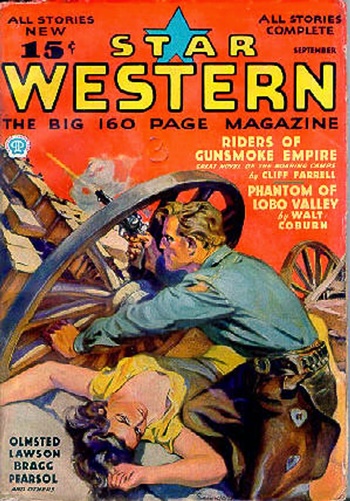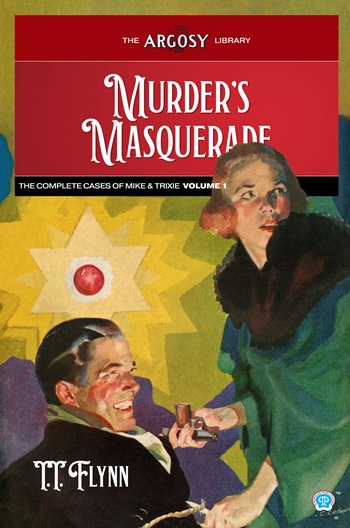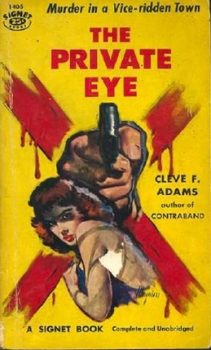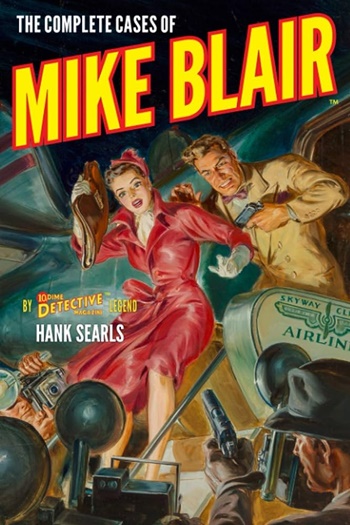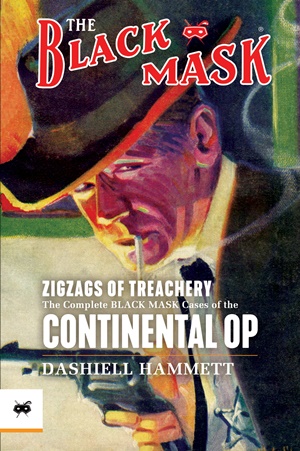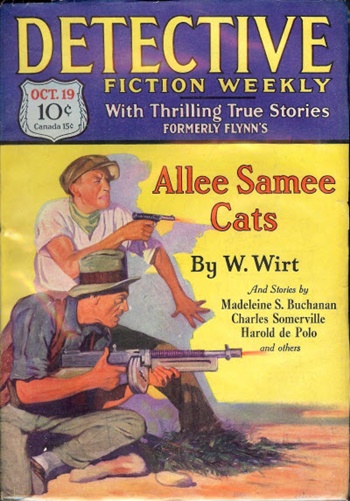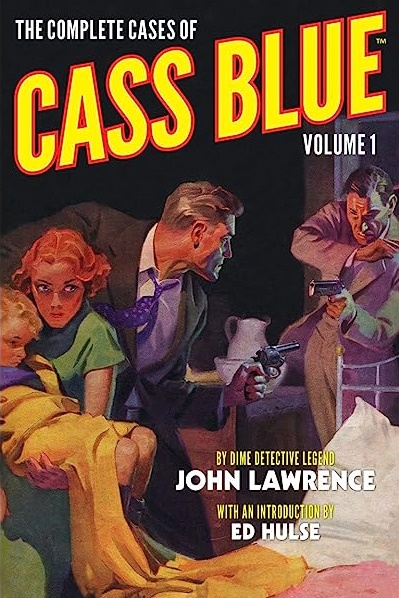A (Black) Gat in the Hand: William Patrick Murray on Cross-Genre Confusion, and Supernatural Westerns
 “You’re the second guy I’ve met within hours who seems to think a gat in the hand means a world by the tail.” – Phillip Marlowe in Raymond Chandler’s The Big Sleep
“You’re the second guy I’ve met within hours who seems to think a gat in the hand means a world by the tail.” – Phillip Marlowe in Raymond Chandler’s The Big Sleep
(Gat — Prohibition Era term for a gun. Shortened version of Gatling Gun)
Last week was part two of fellow Robert E Howard Foundation Award-winner John Bullard’s look at Robert E. Howard’s humorous Westerns. Earlier this summer, Pulp maven (and fellow Sherlock Holmes afficionado) William Murray revealed right here in this column, that Dashiell Hammett did not actually write “The Diamond Wager/” Will, who has written about Doc Savage, and The Spider, for A (Black) Gat in the Hand, is back at it again.
Will – who has written THE look at Western pulps – Wordslingers: An Epitaph for the Western – takes us into the world of Weird Westerns. It’s no surprise that Pulp editors were leery of ‘crossing the streams’ for these types of stories. Read on!
Cross Genre Confusion
In the beginning, the pulp magazine was an undifferentiated product.
Starting with the first of its type, The Argosy, it was essentially a colorful cornucopia of fiction, much of it belonging to no particular category. Stories of city, farm, and tenement life were common. Yarns set in the half-tamed West were not always gunsmoke sagas, but simply narratives set in the contemporary West. Historical tales were also common. As were simple homespun comedies. Many were quasi-adventure stories of men at their work. Thus we often discover coal mining episodes, off-field yarns, and Mountie exploits.
